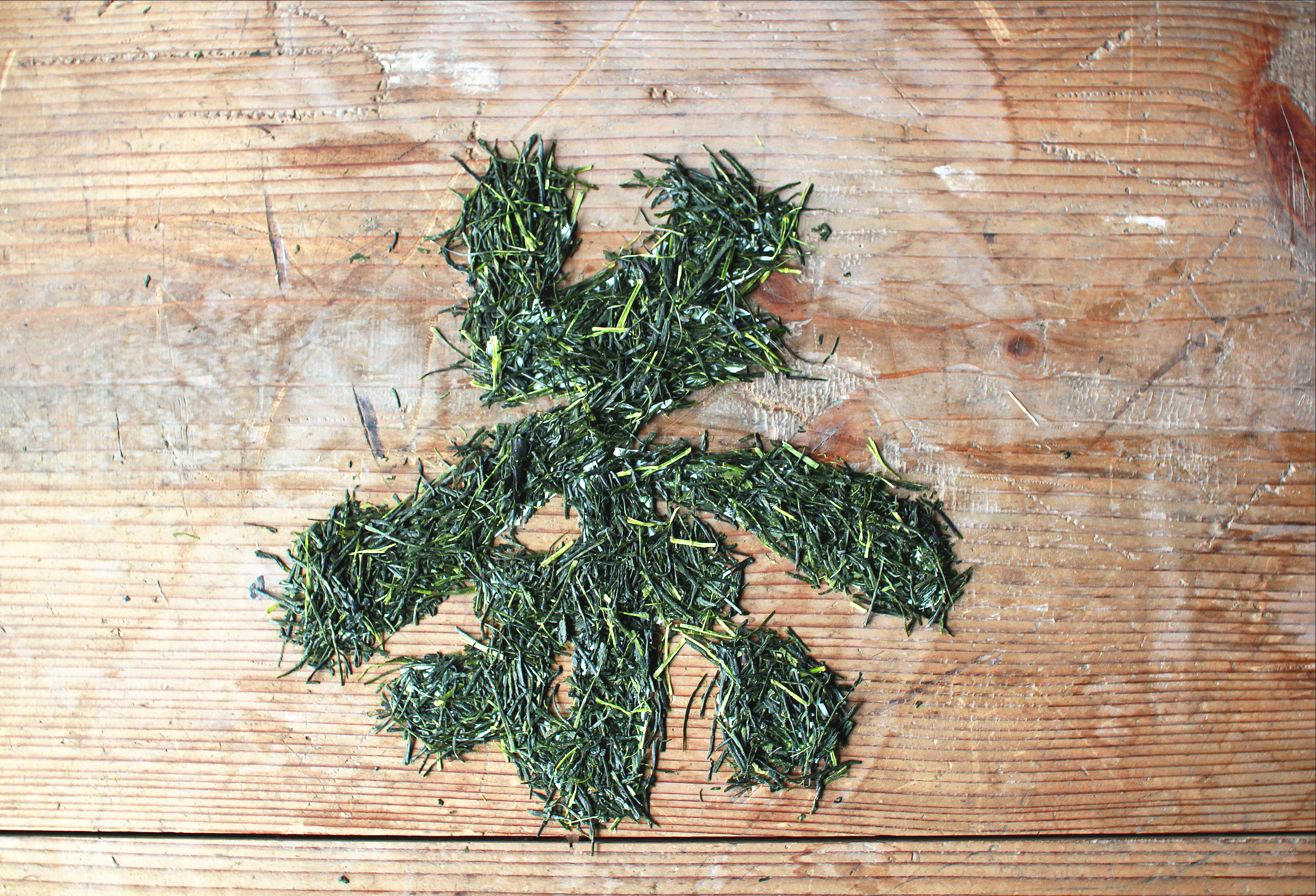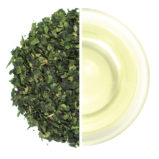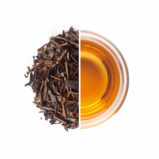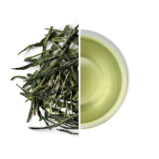Description
Qu’est-ce que le Sencha?

Le Sencha (煎茶), ou littéralement «thé infusé», fût inventé en 1835 et est aujourd’hui le type de thé le plus courant et populaire au Japon. Représentant plus de 80% de tout le thé vert du pays, il est unique par sa couleur émeraude distinctive et son goût végétal herbacé.
Après la récolte, les feuilles de thé sont immédiatement passées à la vapeur afin de stopper le processus d’oxydation. Cette étape cruciale permet de préserver tous les arômes frais et printaniers de la feuille, faisant du Sencha le thé symbole de printemps par excellence pour les Japonais. Les feuilles subissent ensuite tout un processus de roulages et de séchage, pour résulter en un magnifique thé de fines aiguilles.
Profil de l’agriculteur

Akihiro Kita dit « Akky » est le président et l’exploitant agricole principal d’Obubu Tea Farm.
La création d’Obubu Tea est à l’origine de son désir de rendre le thé japonais accessible à tous !
Lors de ses années à l’université, Akky s’est fait engager en tant qu’employé saisonnier dans le village de thé de Wazuka et … ce fût le coup de foudre!
Il prit alors la décision de quitter l’université pour consacrer tout son temps à maitriser l’art de la culture du thé en devenant lui-même producteur.
Prenant conscience de l’envie et du besoin des agriculteurs indépendants tel que lui de partager la joie que procure une simple tasse de thé, il voyage depuis tous les ans durant la période hivernale pour diffuser sa passion pour le thé japonais avec des gens du monde entier.
Méthode de fabrication et guide d’infusion







Obubu Tea –
Reviews by tea professionals and enthusiasts:
» The dry leaves have an aroma of marine air, green grass, warm hay, and wood.
The infusion is light yellow-green with a sweet, vine green aroma and a taste that is green and woody with low astringency and a long green finish.
This sencha remained pleasantly mellow with a sweet aroma throughout three infusions. I even picked up a hint of maple in the second infusion » – Heather Porter, 2016
« This tea is taking me back to my childhood summertimes in an agricultural town, and it is such a winner from the sampler!
It is deeper than the Spring Sun, though maybe a little less complex. Dry leaf is gorgeous – a few shades of green varying in the leaf, and smelling like fresh cut grass (a big summer signifier for me). In the warmed kyusu, that became the scent of hay, then finally in the cup, a very vegetal taste – big leafy greens, like a rich salad in a cup » – pkmnnerdfighter, 2016
» I really enjoy this tea. It’s sweet and grassy but doesn’t have that slight astringency that other senchas have. It’s very smooth and bright » – CarthagoDelinda, 2016
» The first steep is sweet, it starts with a sweet grass taste that fades to fresh cherry. After this initial sweetness, the taste fades to a grassy bitterness and a touch of kale. The finish returns to a gentle sweetness that takes all the bitterness away, the hay sweetness lingers for quite a while » – Amanda Freeman, 2014
“I rarely drink greens, but in my limited experience I really liked this one. The smell of the dry leaves was sweet and a tad fruity, with a main sent somewhere between grass and pine needles. May not sound too pleasant in words, but its quite nice. The brew itself was sweet, with a bit of vibrancy and umami, and a nice dark taste going down the throat. The taste and aroma managed to linger quite some time after the final infusion, which I always find quite enjoyable. I also felt a light and pleasant energy from the tea.” – by PurplePotato, 2014
“This is very different from the senchas I’m used to. It is still buttery and spinachy, but there’s a haylike or grassy quality as well. Kind of like sencha with some white tea thrown in? I find it interesting that this is the summer harvest sencha, because the hay notes really make me think of summer time!” – by Stephanie, 2014
“Very nice, and quite different from other Japanese Senchas I’ve tried. This tea is very much like the description depicts: it starts off with a savory bitterness which wanes into a smooth sweetness toward the tail, and then there is an astringency that cleanses. I enjoy this for how different it is. It is probably not a Sencha I’d drink every day, but, it is one that I’d enjoy on occasion, and it would definitely make a pleasing palate cleanser after meals.” – by LiberTEAS, 2012
“A very nice sencha that brews up well in 4 infusions, keeping a bright green color and lightly savory flavor. Bright, lightly buttery, and yes a small amount of bitterness in the first brew. But a good kind of bitterness like fresh mustard greens or spinach. Shipped direct from Japan, this tea is actually quite reasonable, and much better than many of the more expensive senchas available in the USA.” – by E Alexander Gerster, 2011
“I drank this iced. I love love this tea. Tastes like buttery spinach. Used 1 tablespoon for 16 oz. This is my kind of sencha. No real astringency, slight sweetness.” – by Mel, 2011
“A lot more savoury and less bitter than I was expecting, especially as I brewed this tea with near-boiling water. I really like this tea – it has a surprisingly strong taste for a sencha, very vegetal and buttery as you might expect, but with more umami than I would have expected.”- by Sunlandictwins, 2011